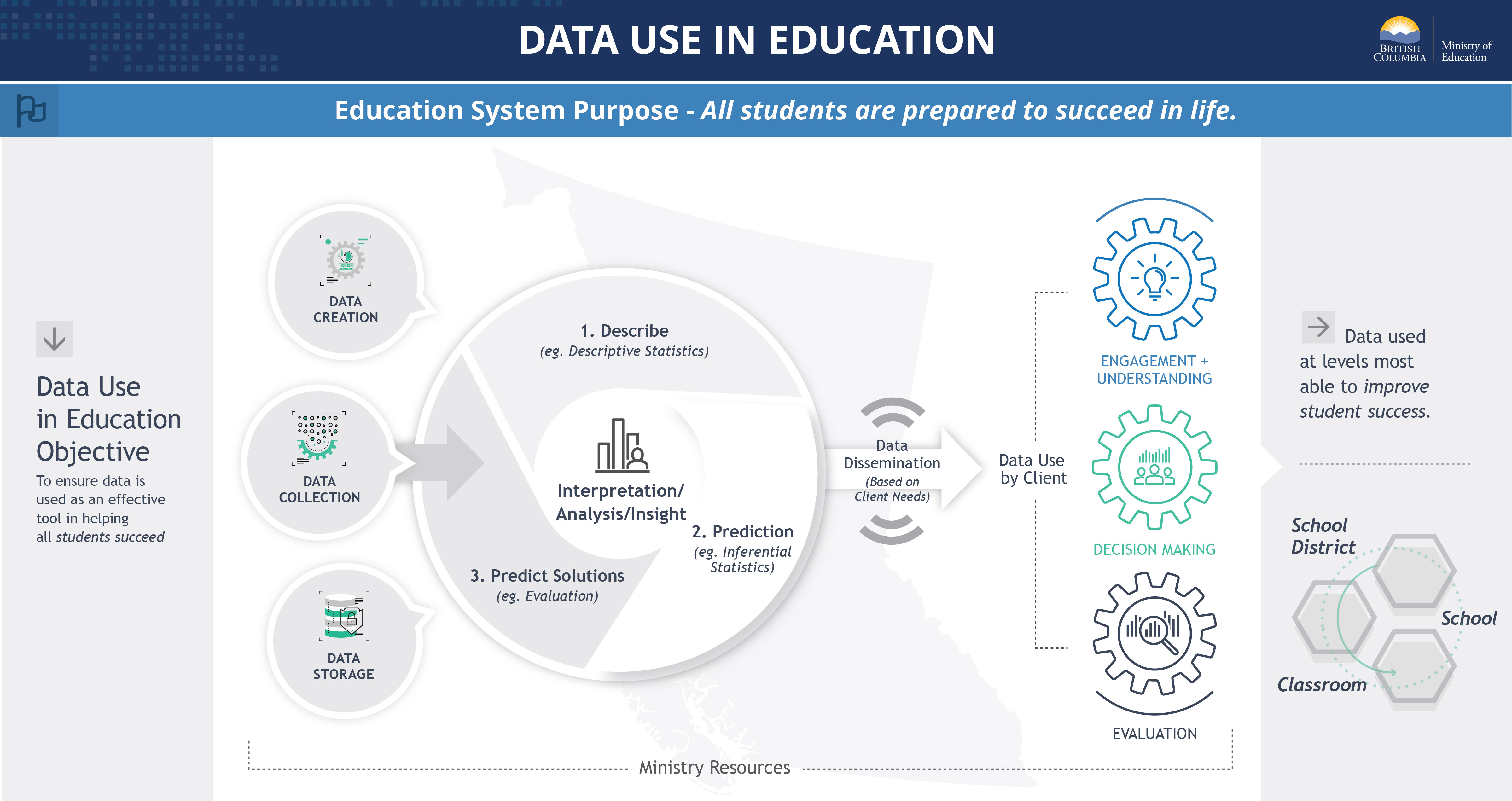How assessment data is used

Last updated: February 03, 2021
On this page:

Students succeed when caregivers, educators, administrators and policymakers have the right information to make decisions and take action. For example, decision makers can use data to:
- Get new insights into the education sector
- Recognize patterns and can help make connections for making improvements
- Make policies or solve problems that will help improve student outcomes
There are many types of data that support student learning. For example, academic and demographic information, assessment results, teacher observations or student activities. Other data sets also provide factors that impact student success from within and outside the education sector, for example:
- Other provincial government open data (e.g. data from post-secondary students or the Data Innovation Program)
- Data from Statistics Canada related to labour market outcomes and post-secondary journey


The Ministry of Education uses data to measure how districts are meeting goals for students, make adjustments to curriculum, allocate school funding, change polices or conduct research.
School districts use data to make decisions about what resources or funding each school needs to support its students. Educators use data to know where students are succeeding and struggling. It informs how they decide what students need and how they might adjust instruction to meet student needs.

Making decisions isn't just based on analyzing facts and figures from spreadsheets. Making use of available information also builds relationships between the ministry, district staff, school administrators, educators and caregivers united by the goal of providing the best education to students.


[The data] highlights areas for me to address with students in class, but also collectively as a school where we need to focus instruction to meet students where they are at.

As a classroom teacher, the results inform my teaching...I can spot trends in terms of what my students are struggling with and where I have perhaps not been as thorough.

[I use the results] as a general guideline to inform my in-class instruction. Also as a guideline for where my kids should be, and their individual needs.


I absolutely use our numeracy results in several ways...to look at general trends [in] math concepts that may be problematic for students. We also have a few schools that use the results to help us identify students who may need extra support.

We use them as a district to talk about student strengths and areas needing attention....we ask our school leaders to discuss the results with staff and parents and we expect school plans to address the areas needing attention.

We use results as a district and our team often supports administrators in interpreting their data and determining how to use that data, alongside their class meetings and their school-based evidence-gathering, to make decisions about support.
